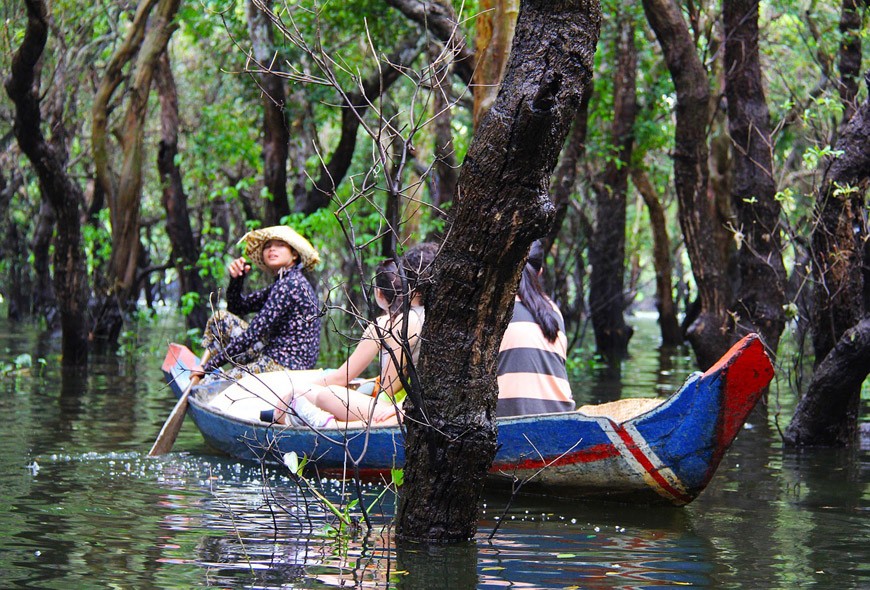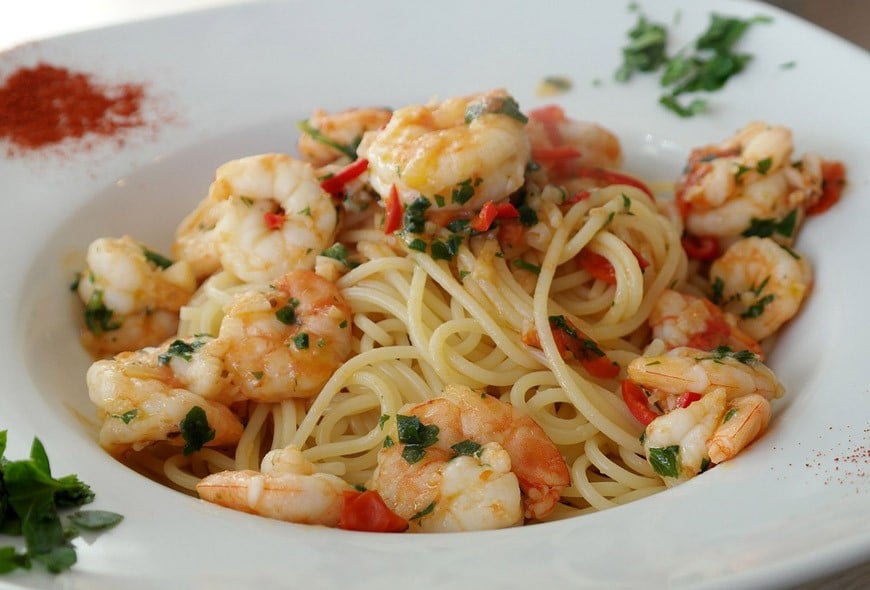With summer just a few months away, it can be hard to deny the allure of a refreshing shrimp cocktail to complement your afternoon BBQ. Shrimp is now as accessible as chicken nuggets thanks to Popeyes’ $3.99 bucket of popcorn shrimp, and Red Lobster proudly promotes their endless shrimp offer. So where is this “endless supply” of shrimp coming from?
I traveled to Sonora, Mexico to investigate the fisheries that provide America’s favorite seafood. I found that shrimp is quickly becoming one of the most environmentally and socially destructive parts of our diet. But how is this so? Where is it coming from, and why should we care? Most importantly, what can we do about it?
Below you will find the hidden consequences of how shrimp ends up on our plate, and how we can help turn the tide by only eating seafood that was harvested responsibly.
Getting to the Source of the Shrimp
There are two sources for where we get our shrimp: wild-caught and farm-raised. Wild-caught shrimp fisheries employ harmful fishing practices such as bottom trawling (dragging nets along the seafloor) to catch this fish. This method not only destroys the bottom of the sea, it also produces the highest rate of bycatch out of any fishing method. Bycatch, the non-target species that are thrown back into the sea, make up to 84% of the total catch in shrimp fisheries, according to a study by Lorayne Meltzer.
Bycatch includes endangered animals, juveniles, and commercial species targeted by the local small-scale fisheries. Most of these creatures are thrown back into the ocean dead or dying before they have matured and produced offspring. This poses a very real threat to the viability of these species and the livelihoods of the surrounding fishing communities.
For every pound of shrimp we eat, anywhere from 3 to 15 pounds of fish are discarded. That means that a six-ounce shrimp cocktail comes with pounds of dead sea turtles, juvenile fish, and other marine life.
Up until the 1980s, wild-caught methods were the exclusive source of fish production. Within a few short decades, fish farming has grown to become the oceanic equivalent of factory farming, and now supplies over half of the fish we eat globally. 90% of our shrimp supply comes from developing countries, and most of it is farm-raised. Unfortunately, shrimp farming has its own set of pitfalls. These “farms” are disrupting natural ecosystems and speeding up global warming, just for starters.
Rainforests of the Sea
In 2007, scientists released a statement warning that if mangroves continue to disappear at the current rate, they will be completely wiped out with 100 years. Shrimp farming is now the number one cause of mangrove deforestation worldwide. This is because mangroves are situated in prime locations for these fish farms: estuaries.
In an effort to attract foreign investment, the IMF, World Bank, and local government leaders in Indian, African, and Asian countries have allowed for the privatization of these mangrove estuaries, enabling shrimp farmers to move into the area and clearcut mangrove forests.
Mangroves normally act as a carbon sink, but when cut down, they become a carbon source. They release the carbon stored in their roots at a rate of 50 times faster than it was sequestered, contributing heavily to global warming. This, coupled with the fuel used to ship the fish internationally, means that shrimping now produces ten times more carbon emissions than beef.
Over time, these farms deposit pollution into the surrounding waters and disrupt natural tidal flows, block creeks, acidify soil, and introduce farmed species that may displace native species in local ecosystems. The salt can also leach into the aquifer below, salinizing the local fresh water supply and the surrounding lands local agricultural trades depend on. The high-density growing conditions accelerate the pond’s ruin.
With the typical shrimp pond in Asia (where we import most of this farmed fish from), the pond can produce seafood for anywhere from 3-15 years before it becomes so overrun with pollution, disease, and shrimp waste that it must be abandoned for a new location. However, the devastating effects on the community and environmental health last decades after the pond has been abandoned.
It is not simply the physical destruction of estuarine and mangrove ecosystems that is detrimental to local communities, but also the loss of access to a public resource. In Let Them Eat Shrimp, author Kennedy Warne notes that mangroves are not merely trees to those who live around them, but also supermarkets, lumberyards, pharmacies, and even fuel stations. For some villages, as much as 75% of their income comes directly from mangroves. Without these wetlands, villagers lose their livelihoods, their food source, and their heritage.
How We Can Help
There is no denying that our seafood-eating habits are changing lives and ecosystems across the globe. If you are not ready to make the move away from shrimp entirely, there are shrimp sources that are more sustainable than their conventional counterparts.
Tips for Eating Shrimp Responsibly:
- Look for third-party approval. Look for products that have been certified sustainable from programs such as the Marine Stewardship Council (MSC). Monterey Bay’s Seafood Watch Program makes a portable pocket guide that you can print out or download on your phone. It shows the best choice species, good alternatives, and species to avoid.
- Buy local, buy American. The United States has more stringent fishing and farming standards than our foreign counterparts.
- Choose closed system U.S. farms. These are a better choice for farmed fish as they are usually operated in recirculating large tanks, minimizing pollution and water waste.
- Avoid imported shrimp. Ninety percent of U.S. shrimp is imported from Asia and South America. Most of these imports come from open system fish farms, often grown in dredged ponds within mangrove estuaries.
- Best Choice Species: Pink Shrimp from Oregon
- Eat shrimp less frequently. Try replacing the standard protein sources on your plate with grains and greens. One cup of quinoa has the same amount of protein as a three ounce standard serving of shrimp (~18 grams).
Resources on how to contribute to the solution:
- Download Monterey Bay’s Seafood Watch Guide for your area.
- Find a local retailer of MSC certified seafood.
- Where does your favorite restaurant rank in terms of seafood sustainability? Find out on Fish2Fork.
- Get involved at Kino Bay Center for Cultural and Ecological Studies, a nonprofit working on community based initiatives towards a sustainable seafood future.



